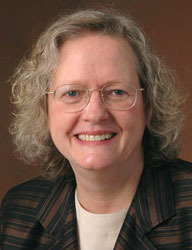From the Dean

Greetings from Purdue! In this issue of Engineering Impact Online, Purdue Engineering and its alumni/ae continue to find innovative ways to have an impact on the world.
Steelmaking today is reclaiming waste materials left behind in Minnesota iron mines of the 1890s, a heyday for feeding the growing industrialization of America. Alumnus Matt Lehtinen (ECE ’04), president and chief operating officer of Magnetation, is developing eco-friendly ways to extract those materials without disturbing any new land.
Some of the best engineering teams are distinguished by their diverse makeup — with diversity across countless dimensions. And in problem solving and design, the group dynamic can find crucial advantages in diversity of thought, experience, and perspective. Brad Duerstock (PhD ’99), an associate professor of engineering practice and director of the Institute for Accessible Science (IAS), is working to bring more students with disabilities to the table in matters of science, technology, engineering and mathematics (STEM). A neuroscientist, Duerstock uses a wheelchair because of a spinal cord injury he suffered as a teenager. He has co-edited a resource booklet titled “From College to Careers: Fostering Inclusion of Persons with Disabilities in STEM” that explores future directions for improving the academic success of postsecondary students with disabilities.
Poet Samuel Taylor Coleridge penned the phrase “water, water, everywhere, nor any drop to drink.” While he wasn’t clairvoyantly speaking of today’s global water crisis, his words ring true. By some estimates, each day nearly 5,000 children worldwide die from diarrhea-related diseases, a toll that would drop dramatically if sufficient water for sanitation was available. Ernest “Chip” Blatchley, professor of civil engineering and professor of environmental and ecological engineering, with students from a service-learning class are doing their part by developing, constructing, and implementing a safe-water system in Las Canas, Dominican Republic. The system they developed and installed will yield water that meets the World Health Organization’s standard for E. coli and other potable water indicators.
In 2011, President Barack Obama spoke of the need to train 10,000 new American engineers a year. Purdue Engineering, through its strategic growth plan, has heeded that call by working to increase the number of faculty, staff, and students — including women — in engineering. Beth Holloway, director of Purdue’s Women in Engineering Program, uses her personal insight as a mechanical engineer to draw more women into engineering. She also supports student success in her role as the college’s assistant dean for undergraduate education.
These are indeed exciting times at Purdue!
Sincerely,
Leah H. Jamieson
The John A. Edwardson Dean of Engineering